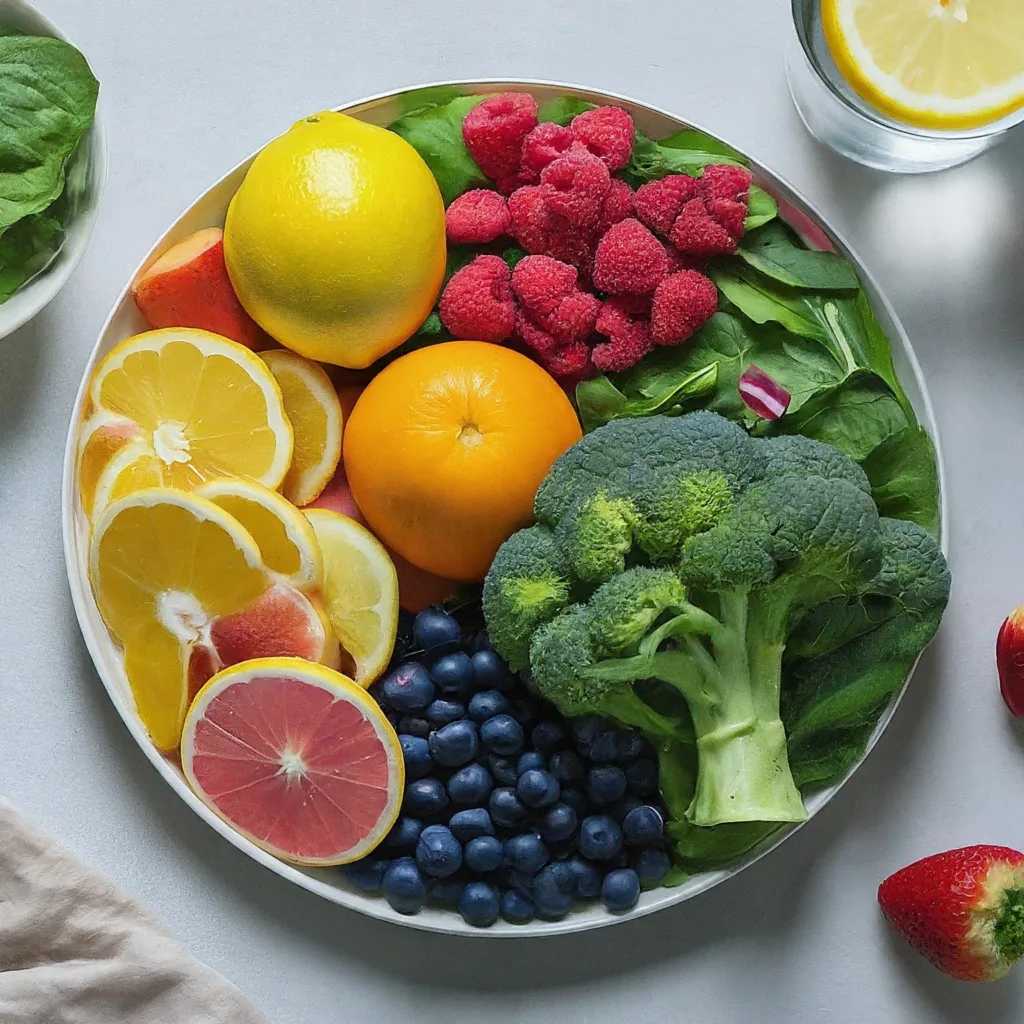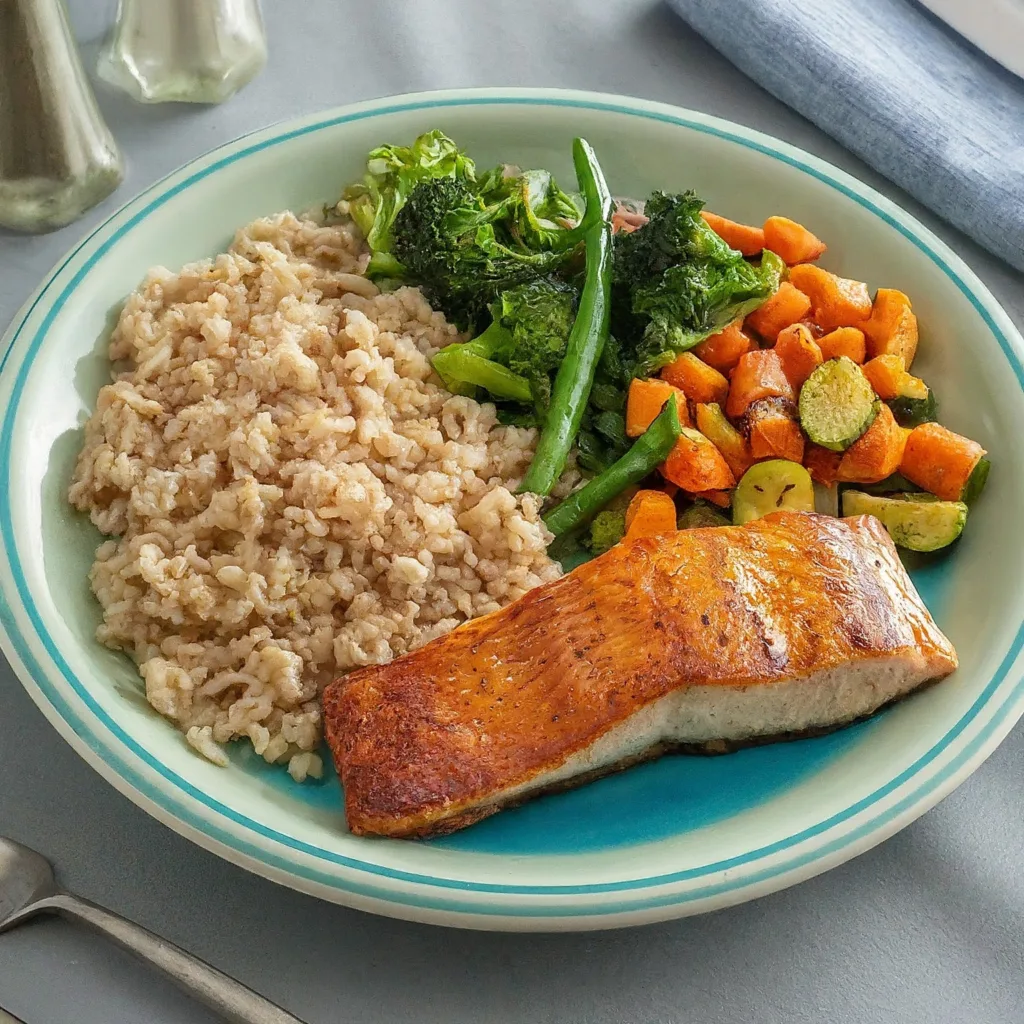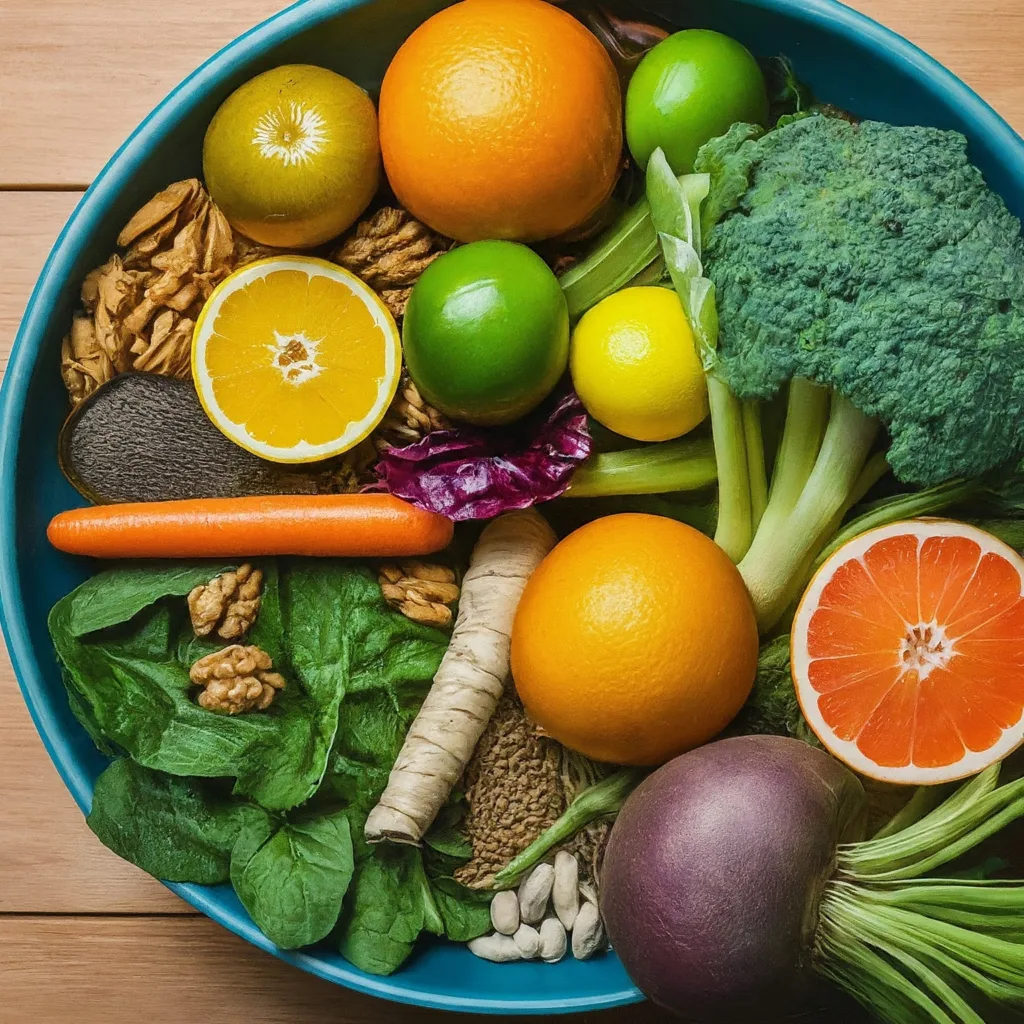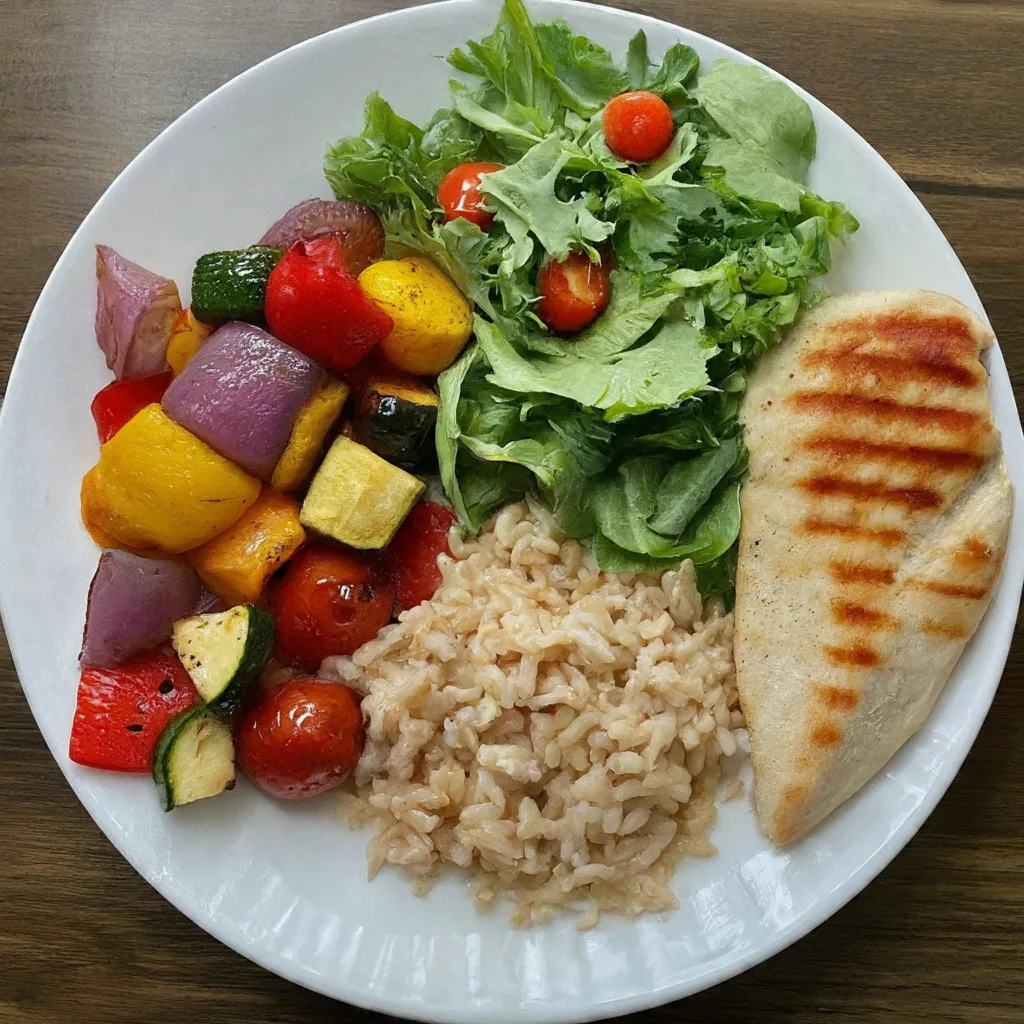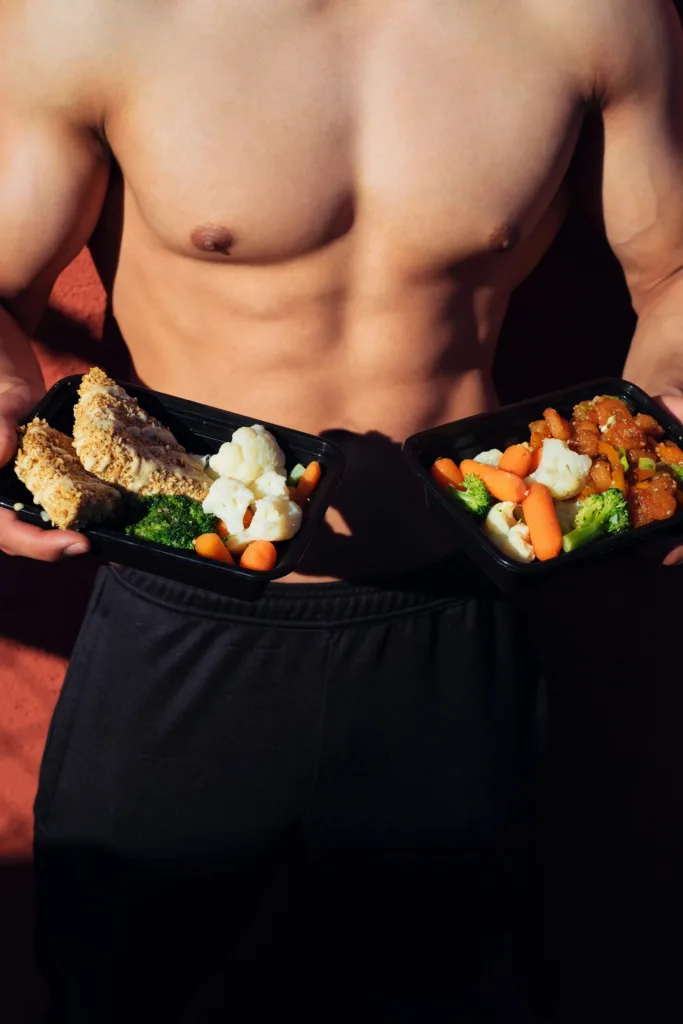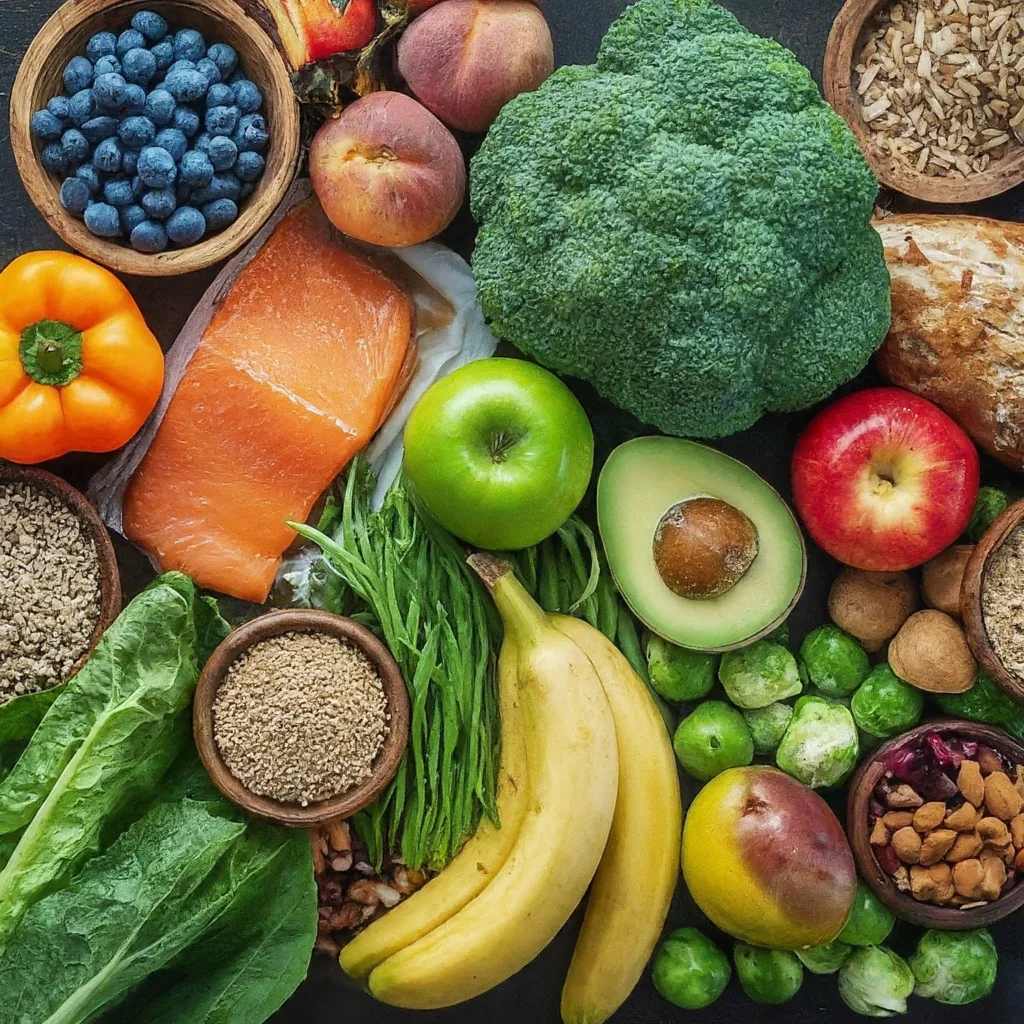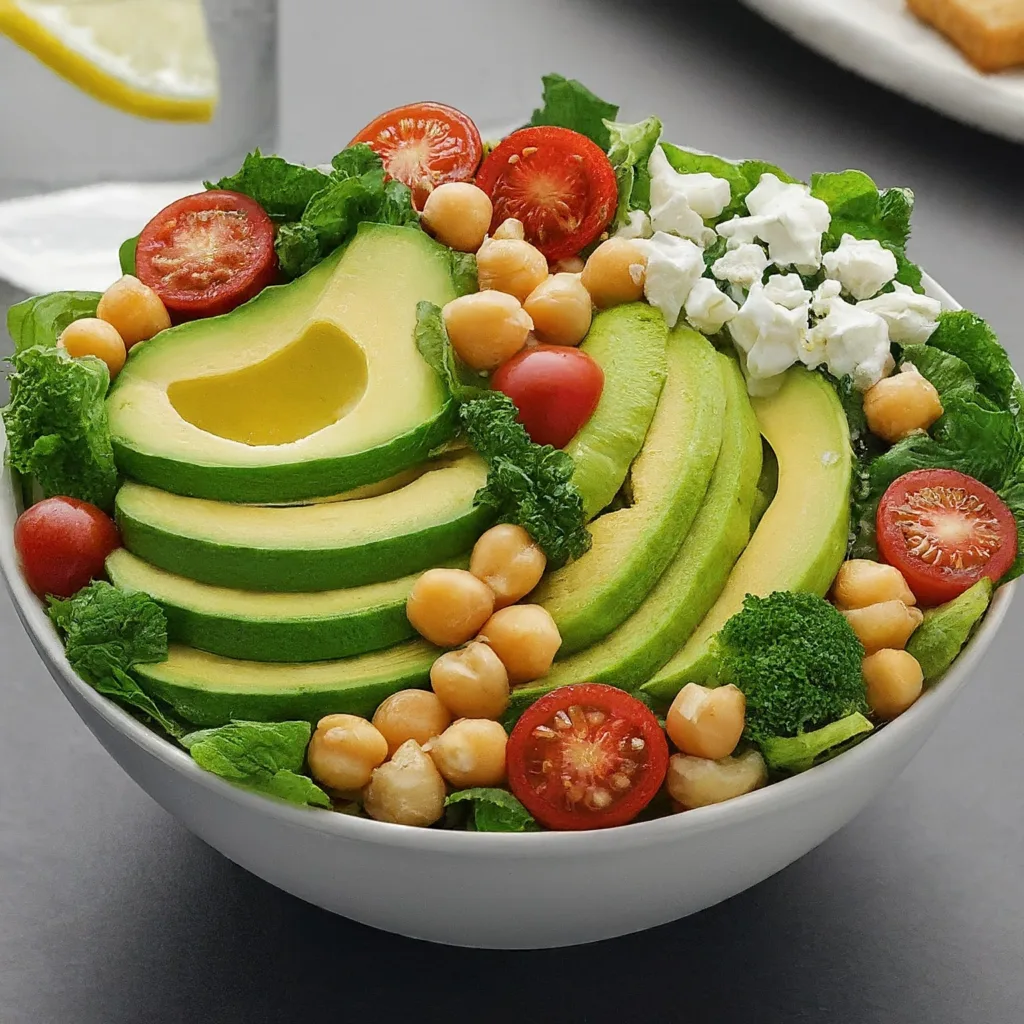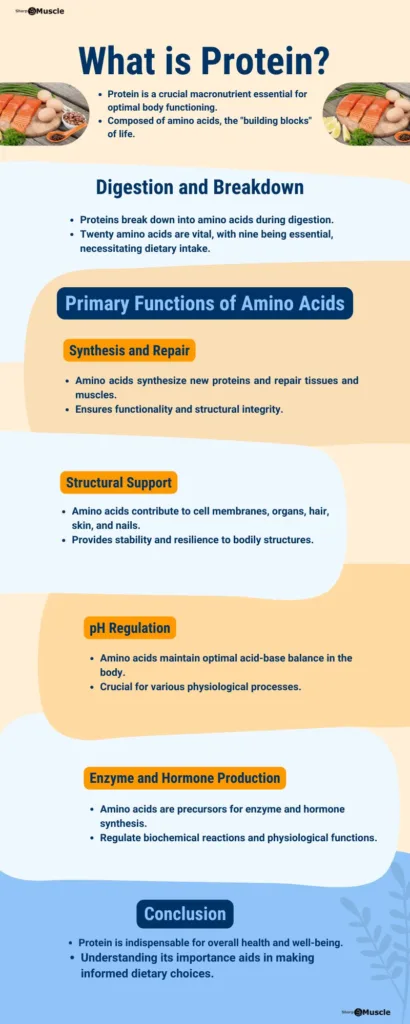Achieving significant muscle gains requires more than sheer effort—it demands strategic precision. The 2400-calorie diet, meticulously crafted to pave the way for a transformative journey in muscle growth, will be explored in this comprehensive guide.
In This Article
Overview
This method is based on the concept that lean muscle gains may be a healthful endeavor if done with mindfulness and purpose. We navigate the multifaceted terrain of lean muscle gains, focusing on the importance of nutrient-dense meals, calibrated calorie intake, and including essential nutrients such as protein, carbs, and healthy fats into our 2400-calorie diet for muscle gains.
The subject of this article continues beyond diet, discussing useful strategies such as strength training and careful intake of protein supplements. These approaches are shown as catalysts for stimulating not only lean gains but, most important of all, valuable muscle growth.
However, we understand a variety of individual journeys. Addressing possible problems and acknowledging specific differences in how bodies respond to muscle gains efforts, we traverse this route with the awareness that one size does not fit all.
This guide proposes for a balanced and sustainable approach to muscle building, as opposed to simply concentrating on numbers on the scale. By delving into the complexities of the 2400-calorie diet, we enable you to go on an innovative process toward a stronger, healthier, and more muscular self.
Determining Who Benefits from a 2400-Calorie Diet
Understanding the complexities of a 2400-calorie diet highlights an obvious question: who stands to gain the most from this finely maintained diets approach? By figuring out the factors that determine daily caloric requires, we shed light on several factors that highlight the suitability of this diet plan.
Factors influencing daily caloric needs:
- Gender: Biological differences between men and women are important. On average, women burn 5-10% less calories at rest than males of the same height. 1
- Age: Age is a key factor in determining daily caloric needs, as resting caloric expenditure decreases with age. 2
- Height: Height affects the caloric equation. People who are taller naturally require more calories to maintain their weight than their shorter counterparts.
- Activity Level: Physical activity levels, ranging from formal exercises to outdoor work and fidgeting, have a major impact on calorie demands. 3
Recommended Daily Caloric Ranges
For adult women, the recommended daily caloric range spans from 1,600 to 2,400 calories, with sedentary individuals leaning towards the lower end. Adult men, on the other hand, may require 2,000 to 3,000 calories per day, with the high-end catering to those leading active lifestyles. 4
Reference Parameters
These estimates derive from equations employing an average height and healthy weight for adults. For women, the reference point is a height of 5’4” (163 cm) and a weight of 126 pounds (57.3 kg). Men, in reference, are envisioned at 5’10” (178 cm) and 154 pounds (70 kg).
Tailoring to Individual Needs
Recognizing the diversity in body sizes and activity levels, it becomes apparent that some individuals may necessitate a daily intake exceeding 3,000 calories to maintain their body weight. Athletes, renowned for elevated caloric needs, stand as one demographic, but this extends beyond the realm of sports. Individuals engaged in physically demanding occupations, such as farm laborers or construction workers, may also find a 2400-calorie diet conducive to their energy requirements.
On the other hand, if one engages in moderate exercise on an irregular basis, with minimal activity in between, the caloric needs may not be as great as usually perceived. This comprehensive understanding counters the assumption that all forms of exercise necessitate significant increases in daily caloric intake. 5 6 7
Bottom line
Can You Enhance Your Muscle Gains Goals?
While many people are committed to eliminating extra fat or losing weight, there is a subset of the population that is actively seeking the opposite goal—muscle building.
The accrual of lean muscle bob up when there is a consistent surplus of calories consumed compared to those expended daily. Depending on your exercise level and body size, a 2400-calorie diet may exceed your current caloric requirements, aiding in the buildup of lean muscle mass.
Why would you need to gain muscle?
There exist numerous motives that propel individuals to pursue muscle gain. If your body mass index (BMI) indicates that you are underweight, your healthcare specialist or registered dietitian may recommend focusing on muscle building to address this imbalance.
For athletes, their need to acquire more muscle, especially when it comes to the form of muscle mass, becomes something they deliberately choose to enhance their performance in what they have chosen to do.
Similarly, enthusiasts of bodybuilding or powerlifting often pursue muscle gains as a means to increase muscle size and strength, aligning with their specific fitness goals.
In some cases, external factors may need a calorie increase. Health issues such as cancer, infectious diseases, or recovering following major surgery might increase your calorie requirements, providing a reason for going on a journey toward muscle gains. 8 9
Optimal Speed for Muscle Building Safely
While research on this subject is limited, a recommended pace for building muscle falls within the range of 0.5 to 2 pounds (0.2 to 0.9 kg) per week. 10
Notably, individuals experiencing severe undernutrition have safely achieved muscle gains at a more accelerated pace, approximately 4.4 pounds (2 kg) per week. 11
However, it’s crucial to exercise caution, as swift muscle gains can induce uncomfortable side effects, including bloating, stomach discomfort, and fluid retention. For athletes, these repercussions may impede performance, negatively impacting workouts or training sessions. 12
Moreover, rapid muscle gains have the potential to elevate triglyceride levels, thereby increasing the risk of heart disease. 13 14
The speed at which you build muscle is intricately linked to your caloric needs for weight maintenance. If your daily caloric requirement for weight maintenance is 2,000 calories, opting for a 2400-calorie diet can expedite muscle gains compared to someone maintaining their weight on a 2000-calorie regimen.
To illustrate, an 8-week research of 25 healthy people found that eating 950 calories more than their maintenance needs resulted in an average muscle gain of 11.7 pounds (5.3 kg), with 7.7 pounds (3.5 kg) given to fat. 15 Those who consume merely 500 calories above maintenance, on the other hand, are likely to gain modest weight over the same period of time.
Guidelines for Following a nutrient-rich 2400-Calorie Diet
Starting a health-focused 2400-calorie diet plan involves a thoughtful consideration of the three primary macronutrients—carbohydrates, fat, and protein.
These macronutrients contribute calories to your diet in distinct ways. Protein and carbohydrates offer four calories per gram, while fat provides a denser source at nine calories per gram.
To ensure a balanced macronutrient distribution aligned with optimal health, the Institute of Medicine of the National Academies outlines the Acceptable Macronutrient Distribution Ranges (AMDRs), suggesting the following proportions:
- Carbohydrates should constitute 45–65% of total caloric intake.
- Fat intake is recommended to fall within the range of 20–35% of total calories.
- Protein should contribute 10–35% of total caloric intake.
Keeping these recommendations to a 2400-calorie diet, the table below illustrates the corresponding percentages for each macronutrient, offering a practical guide for achieving a well-rounded and nourishing dietary balance.
| Macronutrients | % of total calories |
|---|---|
| Carbs | 50-55% |
| Protein | 25-30% |
| Fat | 20% |
Determining Caloric Intake for Muscle Gains
Initiating any Muscle Gain program necessitates an understanding of your unique daily calorie requirements, as they vary based on individual factors such as height, weight, and age. Follow the three outlined steps below to ascertain your optimal caloric intake for muscle gains.
STEP-1: Calculate the BMR
Utilize an online BMR calculator or a BMR mobile app. Input details such as height, weight, and age. For instance:
- Age: 22
- Gender: Male
- Height: 5’8”
- Weight: 160 lbs (72.5 kg)
Upon utilizing the BMR calculator, your BMR is determined to be 1700.
STEP-2: Calculate the maintenance calories
- Formula: BMR x 1.5 (If you are MODERATELY ACTIVE, 3-5 days per week)
- Formula: BMR x 1.7 (If you are VERY ACTIVE, 5-6 days per week)
Example: For moderate activity, 1700 × 1.5 equals 2550 calories. Therefore, the maintenance calories amount to 2550, representing your “total daily energy expenditure” (TDEE).
STEP-3: Add extra calories for muscle gaining
- LEAN GAIN (+250 cal in surplus): If aiming for a 0.5 lbs per week gain, add 250 calories. 2550 + 250 equals 2800.
- CLEAN GAIN (+500 cal in surplus): Aspiring to gain 1 lb per week, add 500 calories. 2550 + 500 equals 3050.
- EXTREME GAIN (+1000 cal in surplus): Pursuing a 2 lbs per week gain, add 1000 calories. 2550 + 1000 equals 3550.
- EXTREME BULK GAIN (+1500 cal in surplus): Opting for a 3 lbs per week gain, add 1500 calories. 2550 + 1500 equals 4050.
2400-Calorie Diet Plan For Lean Muscle Mass
This is how a 2400-calorie diet with 5 meals a day that include both non-vegetarian and vegetarian alternatives could be planned. And this 2400-calorie, 5-meal-a-day diet also includes a variety of nutrient-dense meals, such as lean proteins, healthy fats, and a variety of fruits and vegetables.
- Meal-1:
- Incorporate 75g of oats, 1 scoop of whey protein, half an apple, 7 almonds, a dash of cinnamon, and 1 multivitamin supplement.
- Macro-breakdown: Calories – 474, Carbs – 62 grams, Protein – 34 grams, Fat – 10 grams.
- Meal-2:
- Opt for 2 whole eggs, 4 egg whites, 3 slices of multigrain bread, 1 teaspoon of jam, and half a banana.
- Macro-breakdown: Calories – 497, Carbs – 61 grams, Protein – 34 grams, Fat – 13 grams.
- Meal-3:
- Craft a meal with 220g of rice, 110g of kidney beans, 6 egg whites, assorted vegetables (peas, carrots, bell pepper, etc.), and 1/2 teaspoon of ghee or coconut.
- Macro-breakdown: Calories – 461, Carbs – 63 grams, Protein – 32 grams, Fat – 9 grams.
- Meal-4:
- Enjoy 3 rice cakes, 1 teaspoon of peanut butter, 240ml of low-fat milk, and optionally, include boiled egg whites for an additional protein boost.
- Macro-breakdown: Calories – 391, Carbs – 58 grams, Protein – 17 grams, Fat – 11 grams.
- Post-workout:
- Choose either 1-2 scoops of whey in 300ml water (or 6-10 boiled egg whites if whey protein is not available) and supplement with 3g of creatine monohydrate.
- Macro-breakdown: Calories – 201, Carbs – 0 grams, Protein – 48 grams, Fat – 1 gram.
- Meal-5:
- Conclude the day with 200g of black lentils, 100g of brown rice, 1/2 teaspoon of coconut oil for cooking, half a plate of mixed salad, and supplement with 1g of fish oil or Omega 3.
- Macro-breakdown: Calories – 377, Carbs – 51 grams, Protein – 16 grams, Fat – 9 grams.
Macro-breakdown
| Carbs (50%) | 300 grams |
| Protein (30%) | 180 grams |
| Fat (20%) | 53 grams |
Conclusion
In conclusion, the efficacy of a 2400-calorie diet lies in its adaptability to individual goals, whether it be weight maintenance, muscle building, or the pursuit of lean muscle gains. Tailored to factors such as your activity level and body size, this nutritional approach provides a foundation for a well-rounded and purposeful dietary regimen.
Emphasizing the importance of whole, unprocessed, or minimally processed foods, such as fruits, vegetables, whole grains, healthy fats, and lean proteins, is pivotal. These nutrient-dense choices not only contribute to meeting caloric needs but also enhance overall health and well-being.
Conversely, prudence is urged when it comes to highly processed and refined foods. Items like bacon, potato chips, candies, cookies, sweetened cereals, and sugary drinks should be approached with moderation, as their consumption may hinder the attainment of your health and fitness objectives.
In essence, by adopting a 2400-calorie diet and prioritizing wholesome, nutritious choices, individuals can pave the way to a balanced, sustainable, and healthful approach to fueling their bodies and achieving their desired outcomes.
- McMurray RG, Soares J, Caspersen CJ, McCurdy T. “Examining variations of resting metabolic rate of adults: a public health perspective.” Med Sci Sports Exerc. 2014 Jul;46(7):1352-8. doi: 10.1249/MSS.0000000000000232. PMID: 24300125; PMCID: PMC4535334.[↩]
- Krems C, Lührmann PM, Strassburg A, Hartmann B, Neuhäuser-Berthold M. “Lower resting metabolic rate in the elderly may not be entirely due to changes in body composition.” Eur J Clin Nutr. 2005 Feb;59(2):255-62. doi: 10.1038/sj.ejcn.1602066. PMID: 15494736.[↩]
- von Loeffelholz C, Birkenfeld AL. “Non-Exercise Activity Thermogenesis in Human Energy Homeostasis.” [Updated 2022 Nov 25]. In: Feingold KR, Anawalt B, Blackman MR, et al., editors. Endotext [Internet]. South Dartmouth (MA): MDText.com, Inc.; 2000-. Available from: https://www.ncbi.nlm.nih.gov/books/NBK279077/.[↩]
- U.S. Department of Health and Human Services and U.S. Department of Agriculture. 2015 – 2020 Dietary Guidelines for Americans. 8th Edition. December 2015. Available at https://health.gov/our-work/food-nutrition/previous-dietary-guidelines/2015.[↩]
- Mahabir S, Baer DJ, Giffen C, Clevidence BA, Campbell WS, Taylor PR, Hartman TJ. “Comparison of energy expenditure estimates from 4 physical activity questionnaires with doubly labeled water estimates in postmenopausal women.” Am J Clin Nutr. 2006 Jul;84(1):230-6. doi: 10.1093/ajcn/84.1.230. PMID: 16825700.[↩]
- Willbond SM, Laviolette MA, Duval K, Doucet E. “Normal weight men and women overestimate exercise energy expenditure.” J Sports Med Phys Fitness. 2010 Dec;50(4):377-84. PMID: 21178922.[↩]
- Thomas DM, Bouchard C, Church T, Slentz C, Kraus WE, Redman LM, Martin CK, Silva AM, Vossen M, Westerterp K, Heymsfield SB. “Why do individuals not lose more weight from an exercise intervention at a defined dose? An energy balance analysis.” Obes Rev. 2012 Oct;13(10):835-47. doi: 10.1111/j.1467-789X.2012.01012.x. Epub 2012 Jun 11. PMID: 22681398; PMCID: PMC3771367.[↩]
- Dev R, Hui D, Chisholm G, Delgado-Guay M, Dalal S, Del Fabbro E, Bruera E. “Hypermetabolism and symptom burden in advanced cancer patients evaluated in a cachexia clinic.” J Cachexia Sarcopenia Muscle. 2015 Mar;6(1):95-8. doi: 10.1002/jcsm.12014. Epub 2015 Mar 31. PMID: 26136416; PMCID: PMC4435101.[↩]
- Alverdy JC. “Hypermetabolism and Nutritional Support in Sepsis.” Surg Infect (Larchmt). 2018 Feb/Mar;19(2):163-167. doi: 10.1089/sur.2017.313. Epub 2018 Feb 2. PMID: 29394142; PMCID: PMC5815446.[↩]
- Safe Weight Loss and Weight Gain for Young Athletes. (n.d.). HealthyChildren.org.[↩]
- Redgrave GW, Coughlin JW, Schreyer CC, Martin LM, Leonpacher AK, Seide M, Verdi AM, Pletch A, Guarda AS. “Refeeding and weight restoration outcomes in anorexia nervosa: Challenging current guidelines.” Int J Eat Disord. 2015 Nov;48(7):866-73. doi: 10.1002/eat.22390. Epub 2015 Jan 27. PMID: 25625572.[↩]
- Joosen AM, Westerterp KR. “Energy expenditure during overfeeding.” Nutr Metab (Lond). 2006 Jul 12;3:25. doi: 10.1186/1743-7075-3-25. PMID: 16836744; PMCID: PMC1543621.[↩]
- Liu J, Zeng FF, Liu ZM, Zhang CX, Ling WH, Chen YM. “Effects of blood triglycerides on cardiovascular and all-cause mortality: a systematic review and meta-analysis of 61 prospective studies.” Lipids Health Dis. 2013 Oct 29;12:159. doi: 10.1186/1476-511X-12-159. PMID: 24164719; PMCID: PMC4231478.[↩]
- Ye X, Kong W, Zafar MI, Chen LL. “Serum triglycerides as a risk factor for cardiovascular diseases in type 2 diabetes mellitus: a systematic review and meta-analysis of prospective studies.” Cardiovasc Diabetol. 2019 Apr 15;18(1):48. doi: 10.1186/s12933-019-0851-z. PMID: 30987625; PMCID: PMC6466658.[↩]
- Apolzan JW, Bray GA, Smith SR, de Jonge L, Rood J, Han H, Redman LM, Martin CK. “Effects of weight gain induced by controlled overfeeding on physical activity.” Am J Physiol Endocrinol Metab. 2014 Dec 1;307(11):E1030-7. doi: 10.1152/ajpendo.00386.2014. Epub 2014 Oct 7. PMID: 25294214; PMCID: PMC4254990.[↩]


